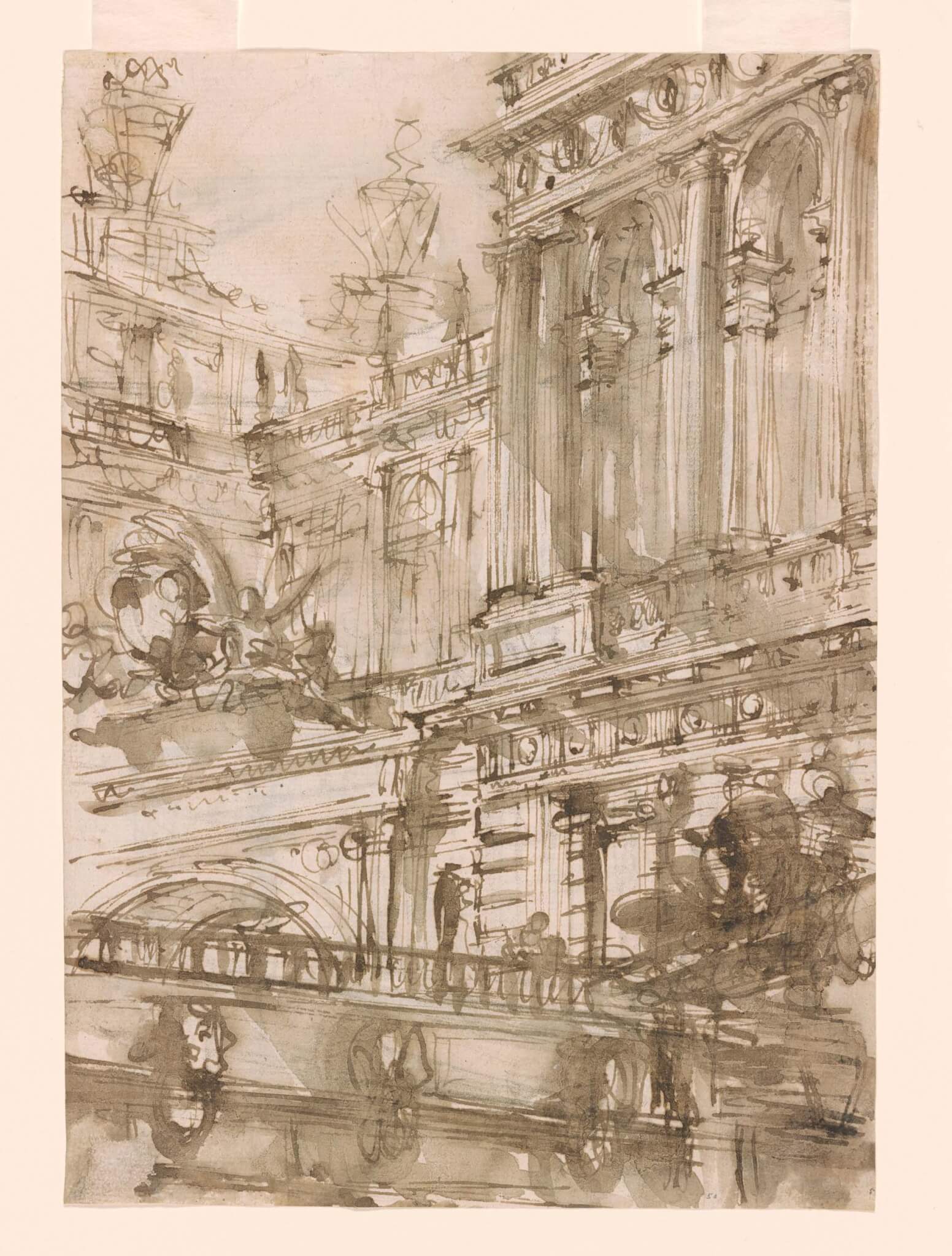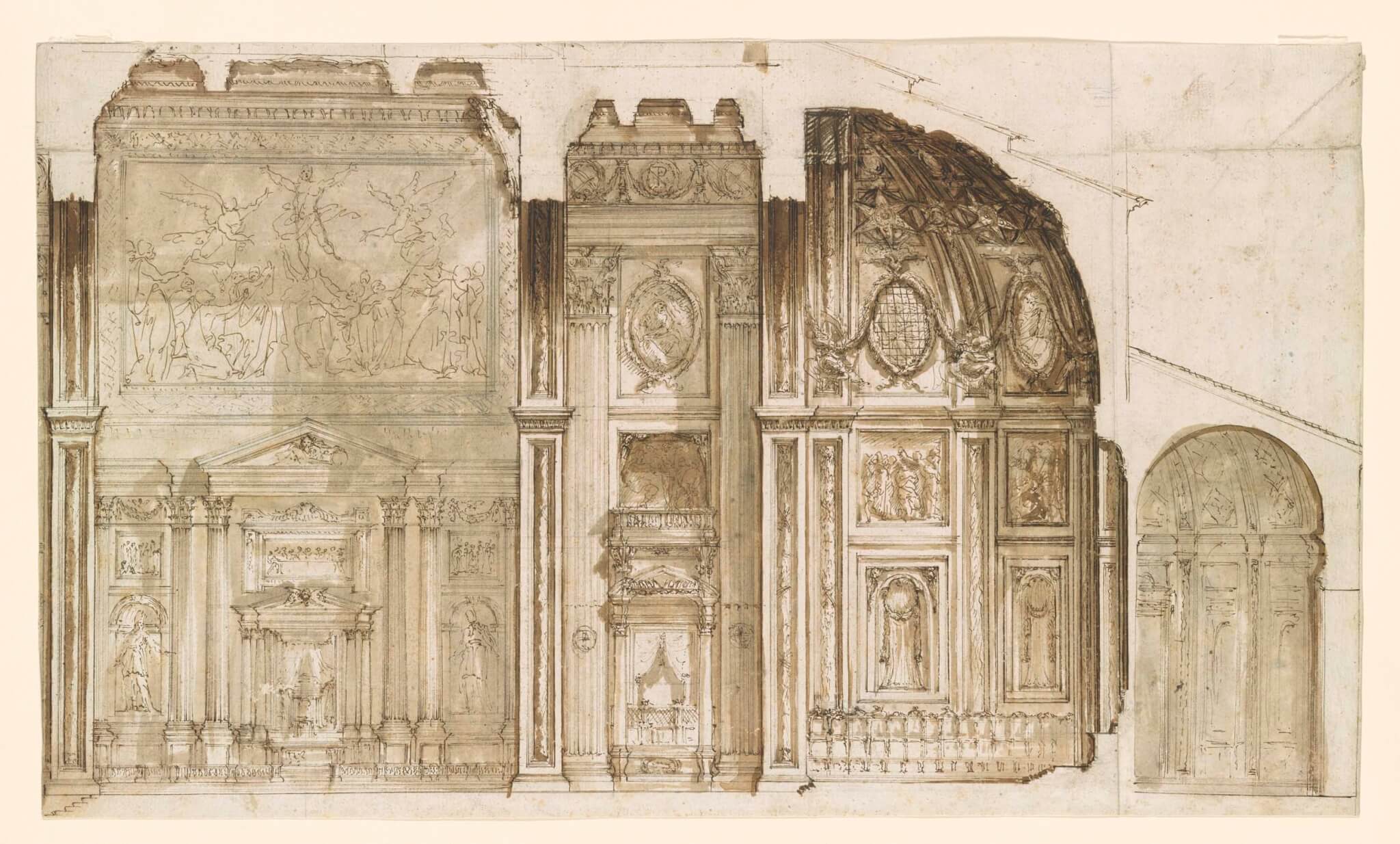Sublime Ideas: Drawings by Giovanni Battista Piranesi
The Morgan Library & Museum
225 Madison Avenue
New York
Through June 4
Giovanni Battista Piranesi (1720–78) was born in Venice into a lineage of architects, engineers, and masons, but it was in Rome where he established his singular identity as an artist, architect, and archeologist who has transfixed generations of audiences with his dizzyingly complex etchings of the Eternal City and creations of his own imagination. Sublime Ideas: Drawings by Giovanni Battista Piranesi, an exhibition that opened at the beginning of March at the Morgan Library & Museum, offers a comprehensive look at Piranesi’s artistic trajectory.
Piranesi’s Rome numbered some 150,000 inhabitants, which was a serious decrease from its projected peak of 1.5 million inhabitants at the height of the Roman Empire. It was, in effect, a city inhabiting the ghost of the old, with architectural vestiges of that bygone era in states of ruin, often half-consumed by a millennium of accreted earth. In short, Rome proved an ideal setting for an artist enamored with the sublime.

The Morgan Library & Museum is a fitting location for the exhibition, as the institution holds arguably the largest and most important collection of Piranesi’s work, numbering nearly 150 architectural fantasies, figural drawings, and sketches and studies of scenes and decorative objects. It would have been impossible to show the entire collection, so those on display were chosen to provide a full representation of Piranesi’s work within the con
fines of the exhibition gallery. “One of the guiding ideas for the selection was to demonstrate how Piranesi used his drawings (and drawings by others)—not merely as one-off sketches, but as an archive kept in the studio, to be repurposed when possible for future projects,” John Marciari, head of the Department of Drawings and Prints at the Morgan Library & Museum, told AN.

The introductory section of the exhibition, Architectural Fantasy and Theory, highlights the early sketches and drawings of Piranesi in his early travels to Rome. Here, with such drawings as Sketches for a Palace Courtyard and Perspective of Massive Piers and Arcades, we see the young architect deft exploration of historical reconstruction and architectural fantasy. These concepts reach a greater, near-megalomaniacal scale with the Architectural Fantasy with a Colossal Facade and Ideal Reconstruction of the Circus Maximus. These works enrapture the viewer with the use of hundreds of minuscule figures, forced perspective, and a dizzying array of ornament.
Sublime Ideas then documents Piranesi’s return to Venice in the mid-1740s. To the exhibition’s great credit, it foregrounds this transitionary stage as the key precursor to Piranesi’s professional shift to one of printmaking rather than architecture, under the tutelage of painter and printmaker Giovanni Battista Tiepolo. “The drawings of the Venetian period astonish in the range and complexity of their imaginative devices,” Marciari shared. “Back in Rome, his expressive facility with line and his sensitivity to the mixing of rich layers of chalk, ink, and wash would continue to develop and would make his drawings unlike those of any of his contemporaries.”

The succeeding sections reveal the artist hitting his stride, producing works of vivid imagination and expert draftsmanship. The Carceri d’invenzione and Prima Party di Architecture e Prospettive print series, with their labyrinthine and set piece–inflected characters, are one example. These explorations are further grounded in the display of Piranesi’s views and figure drawings across Rome, as well as his archeological forays.

Although printmaking was Piranesi’s primary medium, Sublime Ideas rounds out the character of the artist through the curation of his limited architectural output, namely the proposed alteration of San Giovanni Laterano, a project commissioned by Pope Benedict XIV. His investigations of design and decoration are also on view through drawings and etchings.
While Sublime Ideas was intended to open in 2020 in celebration of Piranesi’s 300th birthday, the exhibition is a poignant reminder of the visionary’s lasting contribution to architectural imagination. “I think [Piranesi’s] drawings will be a revelation to new viewers who know [him] mainly as a printmaker: the way that they show his artistic practice and creative process can appeal to many who aren’t necessarily interested in him from an historical point of view,” Marciari concluded.

Centuries later, Piranesi still enraptures.
Matthew Marani, studying city and regional planning at Pratt Institute, writes about architecture and urban design.


 العربية
العربية